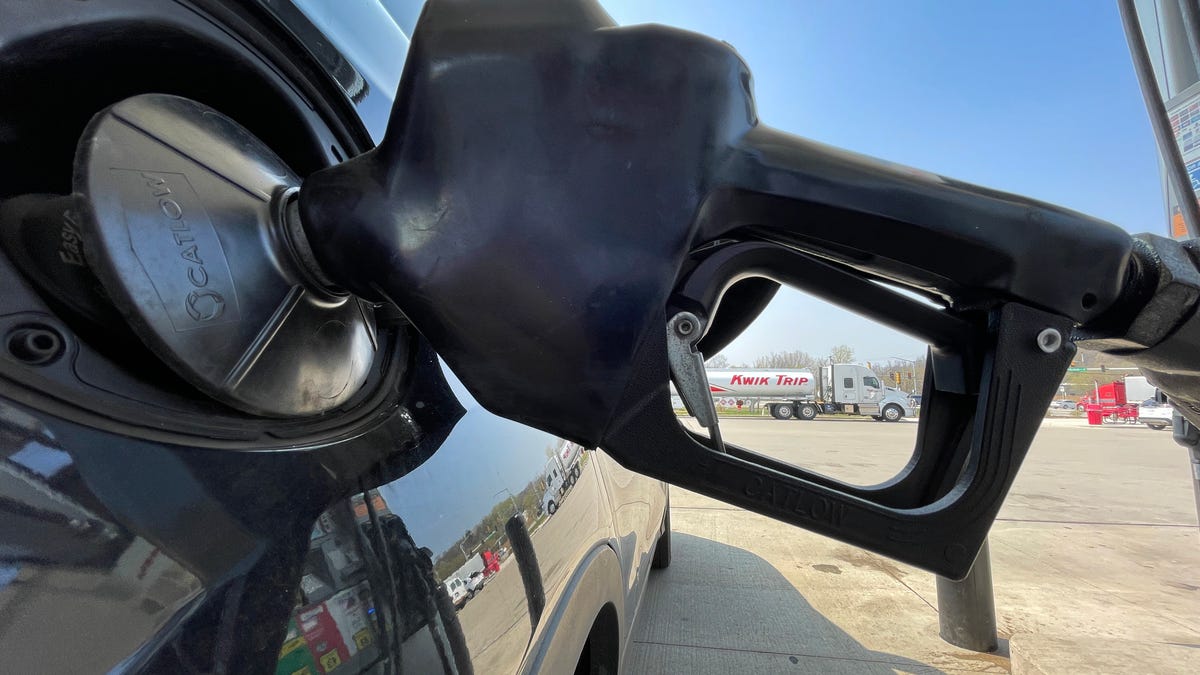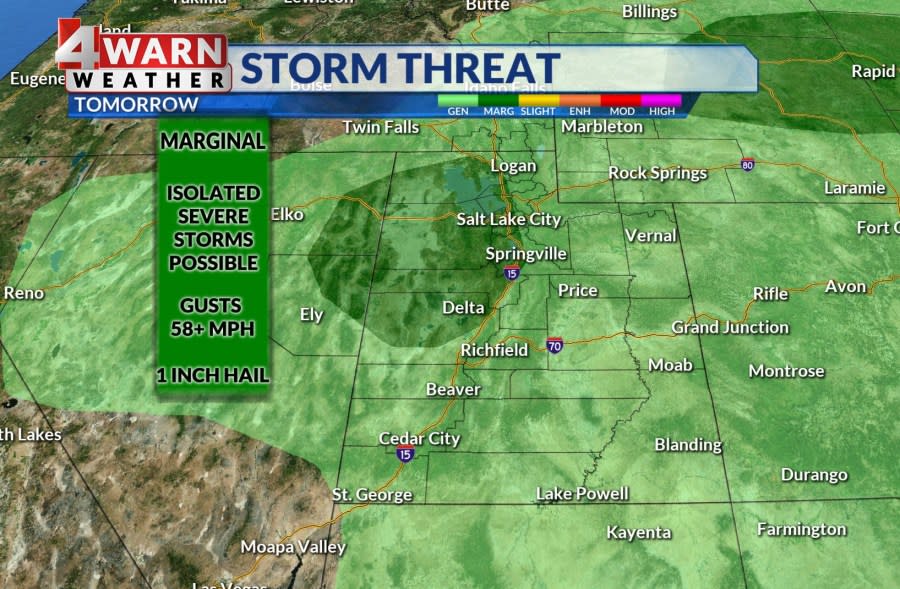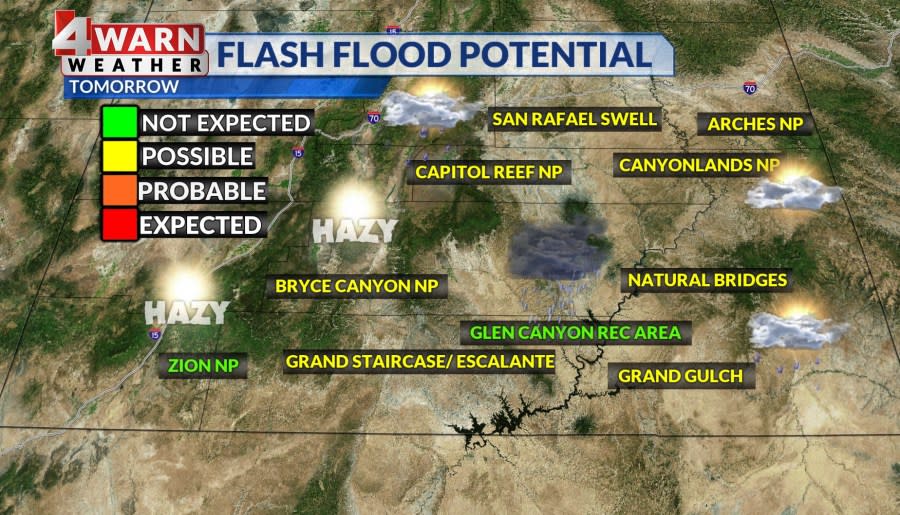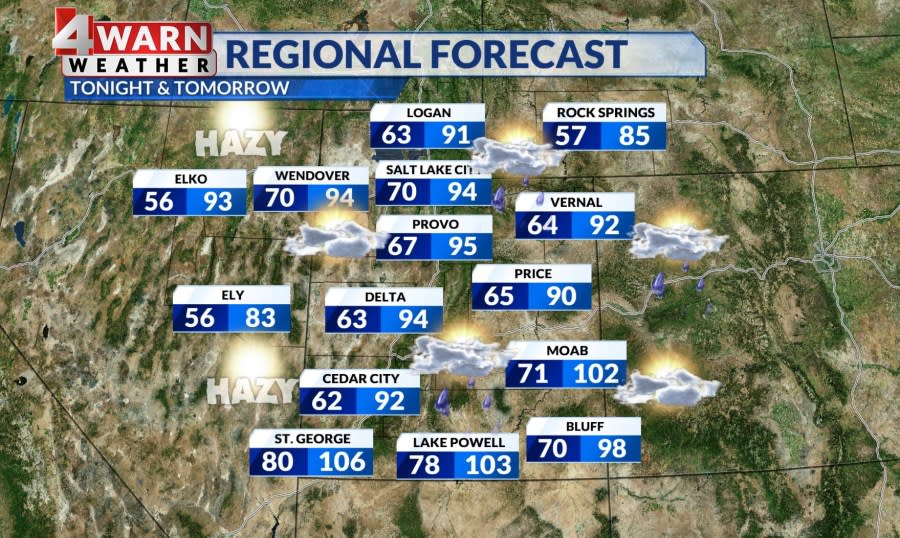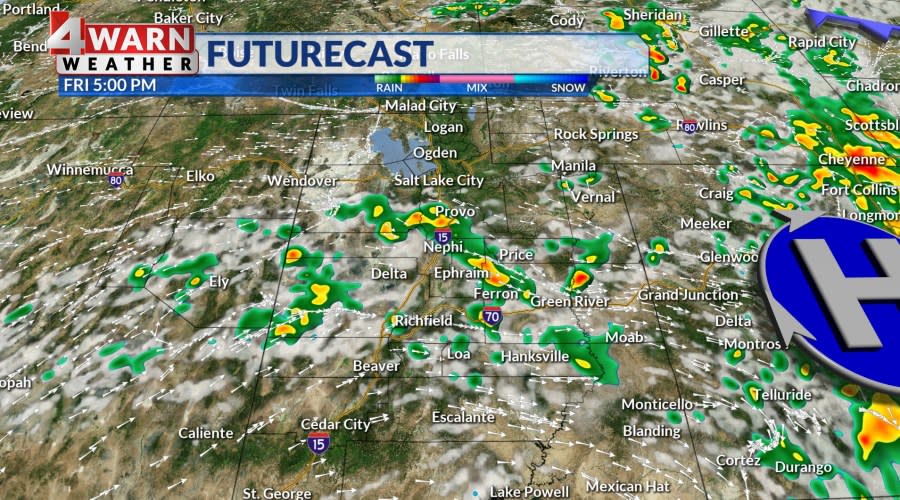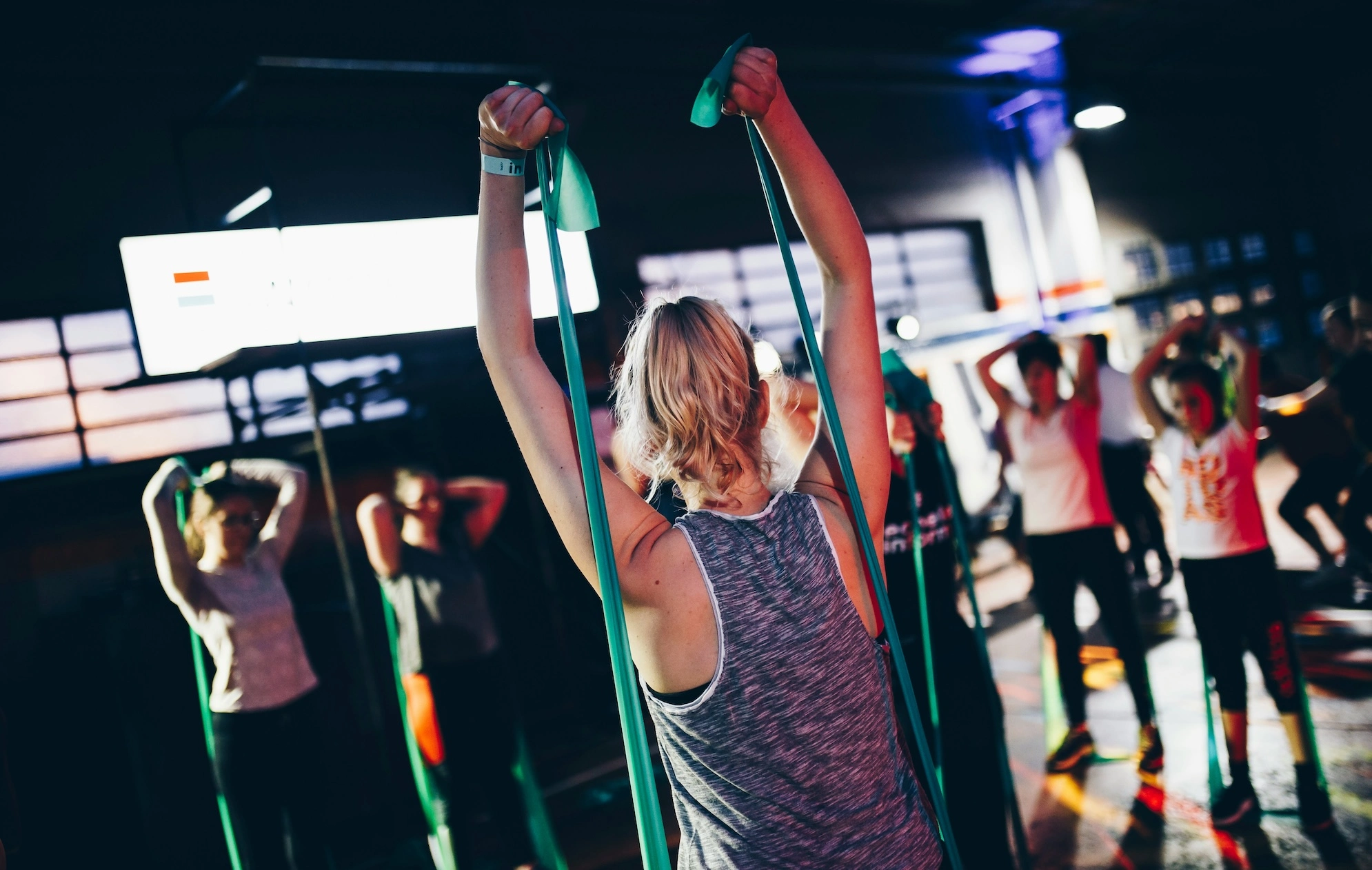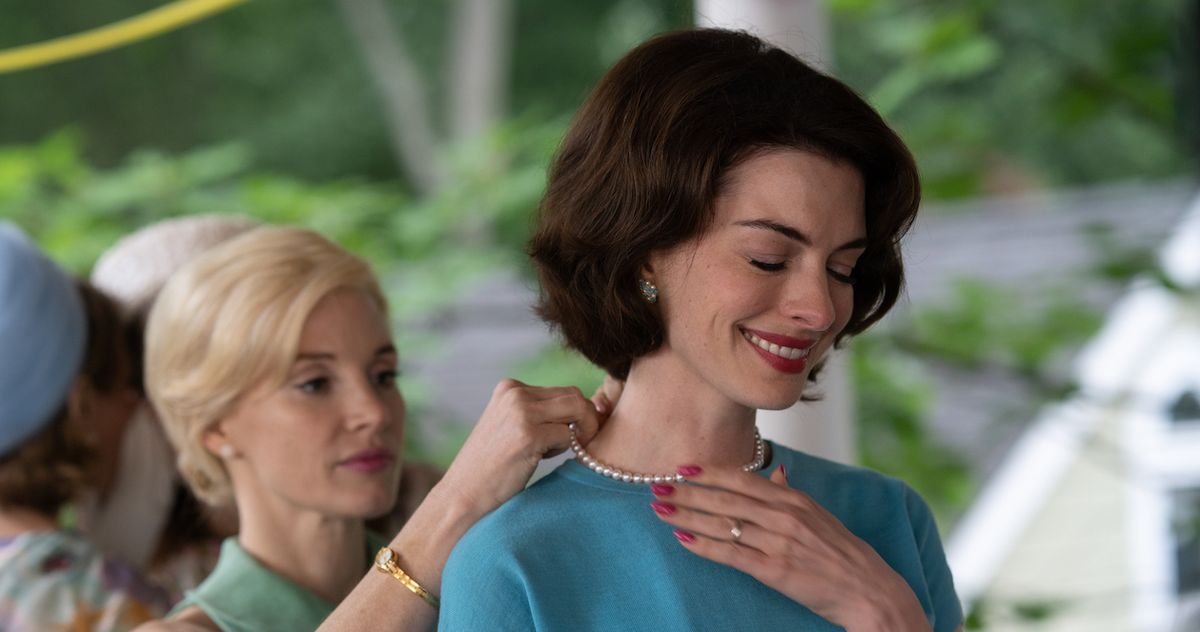Utah
NPS mourns loss of ranger who died on-duty after falling at Bryce Canyon in Utah

A 78-year-old ranger at the Bryce Canyon National Park died due to injuries he sustained after he tripped and fell while on-duty.
Tom Lorig was working with park visitors, directing them to a shuttle bus, at Bryce Canyon’s annual Astronomy Festival around 11:30 p.m. Friday when he fell and struck his head on a large rock, the National Park Service said in a news release.
A visitor found Lorig unresponsive and immediately alerted a law enforcement ranger. Park rangers, medically trained bystanders, and local EMS personnel provided Lorig with initial lifesaving care but were unable to revive him, NPS said.
Deceased worked was a volunteer park ranger
Lorig, who served as registered nurse in Seattle for 40 years, worked with the NPS as a permanent, seasonal, and volunteer park ranger.
He began his work with the National Park Service at Carlsbad Caverns National Park in June of 1968 and served at 14 national park sites including Badlands, Bryce Canyon, Carlsbad Caverns, El Malpais, Florissant Fossil Beds, Glen Canyon, Klondike Gold Rush, Mount Rainier, New River Gorge, Olympic, Saguaro, Yosemite, Zion, and Dinosaur National Monument, “of which he was especially fond,” NPS said.
“Tom Lorig served Bryce Canyon, the National Park Service, and the public as an interpretive park ranger, forging connections between the world and these special places that he loved,” said Park Superintendent Jim Ireland, said in a statement.
“As our community processes and grieves this terrible loss, we extend our deepest condolences to all of Ranger Lorig’s family and friends.”
Ireland also thanked NPS officials, emergency services staff and local bystanders who helped in administering first-aid to the ranger.
Bryce Canyon National Park is located in southern Utah, within a couple hours drive of both Zion National Park and Capitol Reef National Park and about four hours from Salt Lake City.
Bryce Canyon is the smallest and highest of Utah’s “Mighty 5” national parks at 56 square miles and an average elevation of 8,000 feet (some areas top 9,000 feet above sea level).
Contributing: Eve Chen, USA TODAY
Saman Shafiq is a trending news reporter for USA TODAY. Reach her at sshafiq@gannett.com and follow her on X @saman_shafiq7.

Utah
Temps drop with storms lingering across Northern and Central Utah

SALT LAKE CITY (ABC4) — This week, we’ve seen record heat, flash flooding in parts of Southern Utah, and strong thunderstorms impact parts of the Wasatch Front. A drier air mass moves in from the southwest today, but there will still be enough lingering moisture for isolated thunderstorms. As we close out the work week temperature-wise, we are seeing more seasonal temperatures as our ridge of high pressure breaks down and pulls southeast. Daytime highs will be in the mid-90s along the Wasatch Front with more triple-digit temperatures for St. George.
FRIDAY: Lingering moisture allows for isolated t-storms in the afternoon/evening as a trailing disturbance behind the main cold front moves through. Marginal risk for storms for parts of West Desert & Wasatch Front. Seasonal temps in the north, hot still in South- #utwx pic.twitter.com/pF05kqoAtF
— Alana Brophy (@AlanaBrophyWX) July 26, 2024
With isolated storms possible, we have a ‘Marginal’ risk of isolated severe thunderstorms for parts of the West Desert Utah, including portions of the Wasatch Front this evening where the primary threat will be strong wind gusts. Severe thunderstorms can bring an abundance of lightning, wind gusts of 58+ mph, and large hail. St. George only has a slight chance of a storm today, and our flash flood risk is still possible for many locations including our National Parks except Zion and near Lake Powell.
Another weak disturbance brushing by on Saturday will bring a few showers and thunderstorms to northern Utah. Drier air in the south should end the storms, but strong southwesterly winds could create critical fire weather conditions. A fire weather watch has been issued for Saturday afternoon for portions of Central and Southern Utah due to the potential of gusty winds to 35 mph and low relative humidity.
FIRE WEATHER WATCH: This is for Saturday as significant drying takes place across southern & central Utah. SW winds increase leading to the potential for critical fire weather conditions due to gusty winds and low humidities across southern and portions of central Utah#utwx pic.twitter.com/SU4qrO9bkA
— Alana Brophy (@AlanaBrophyWX) July 26, 2024
By Saturday, drier air moving in from the southwest will push moisture out of the state Saturday evening. Sunday will be dry across the region with seasonal highs and lighter winds. The ridge will rebuild over the area early next week with a rebound to above-normal temperatures through midweek. Moisture will also return to areas of southern Utah by midweek, increasing chances of afternoon thunderstorms.
Copyright 2024 Nexstar Media, Inc. All rights reserved. This material may not be published, broadcast, rewritten, or redistributed.
For the latest news, weather, sports, and streaming video, head to ABC4 Utah.
Utah
Is JD Vance’s working-class conservatism the future of the GOP? Utah's youngest lawmaker hopes the answer is 'yes'
Utah’s youngest state lawmaker brought his working-class roots to Washington, D.C., this month as part of a movement trying to change the course of the Republican Party.
Rep. Tyler Clancy, R-Provo, age 27, spoke on July 9 at the fourth “National Conservatism” convention, comprised of political leaders, professors and policy wonks hoping to steer the GOP away from corporate influence and toward a blue-collar populism to advance an “America First” agenda.
“As elected officials, we have more accountability to the people of America rather than companies that try to run this country,” Clancy said during his speech. Republicans are tasked with being a “check on the centralization of power by a few,” Clancy said, whether that be in the federal government or the marketplace.
Concluding the three-day-long event was an address from Ohio Sen. JD Vance, featuring a more culturally aggressive, less economically laissez-faire approach to GOP governance. Less than a week later, Vance was chosen by former President Donald Trump as his vice presidential pick in the 2024 general election and declared, by some, as the new face of the Republican Party.
While Clancy considers himself a limited-government conservative, the up-and-coming state lawmaker believes Vance is representative of an emerging crop of Republican leaders who view policy areas like more family benefits, bringing manufacturing jobs back to the U.S. and regulating “big pharma” as just as essential to conserving the American Dream as pushing for lower taxes on businesses.
“I definitely think you’ll see a shift with the younger generation,” Clancy said in an interview with the Deseret News. “We want to stand up for the working class, we want to make sure that people who are in this country and work hard and play by the rules can feed their families, make sure one medical emergency doesn’t put them into bankruptcy and make sure that we’re balancing all interests, not putting some over others, i.e., Wall Street and massive multi-national corporations.”
An evolving Republican Party
Nearly one hundred years ago, the Republican Party redefined itself in opposition to the New Deal’s tax-and-spend welfare state.
As the de facto party of smaller government, the GOP developed a “strong pro-business constituency” who benefited from lower taxes, fewer regulations and limited government intervention in the economy, said Damon Cann, chair of the political science department at Utah State University and former mayor of North Logan from 2018-2021.
But, according to Cann, Trump’s 2016 ascendancy, propelled by shift in support from white-collar to working class voters, is not without precedent in the Grand Old Party.
“There have been elements of these attitudes and beliefs lying just below the surface in the Republican Party, and I think it’s more that Trump capitalized on them than he created them,” Cann said.
The Great Recession of 2008, the collapsing trust in institutions and the influence of globalization set the stage for a GOP base that was more willing to reject elite economic opinion and international trade agreements in favor of preserving entitlement programs and subsidizing American industries, Cann said.
An example of this change in tone can be seen in Mitt Romney’s prescription in 2008 to encourage the market’s creative destruction by “letting Detroit go bankrupt”, compared to what Cann said was Trump’s message: “I’m going to fight for the lower and middle class workers who are falling as victims of globalization, whose jobs are being outsourced from United States.”
Trump’s new running-mate Vance has stated his support for the former president’s proposed agenda of “broad-based tariffs, especially on goods coming in from China” to “protect American industries from all of the competition.” Vance has introduced new railway safety regulations and has praised the Biden-appointed Federal Trade Commission Chair Lina Khan, known for her aggressive antitrust stance against large tech companies, as “doing a pretty good job.”
Maybe the biggest indicator yet of the GOP’s increasing openness to populist economic policies was the invitation for Sean O’Brien, the president of Teamsters, one of the nation’s largest private sector unions, to speak at the Republican National Convention last week.
Clancy, who has the endorsement of the Teamsters’ local chapter and the operating engineers union in Utah, said he was excited to see organized labor “start to play a role again in Republican politics.”
“Unions are a puzzle piece of our economy and help workers bargain for better wages, better worker safety, health insurance, pensions, etc.,” Clancy said.
Can the GOP be pro-business and pro-worker?
The GOP is unlikely to lose its business constituency even if Republicans continue to flirt with pro-union figures, or feature proposals to increase regulations on “big tech” or revoke China’s favored trading status, because “where else will they go?” Cann said.
“At least at present, the Democratic Party isn’t offering an attractive alternative to Republicans,” Cann said.
But it’s not the change in rhetoric that worries Derek Miller, the president and CEO of Salt Lake Chamber. It’s the prospect of a Republican Party that ceases to prioritize the principles that promote job growth and prevent economic stagnation — the principles, Miller said, that have allowed Utah to build “the most robust and prosperous economy” in the nation by “unleashing the power of free enterprise.”
“We talk about economy, we talk about business, but at the end of the day what we’re really talking about is people,” said Miller, who previously served as chief of staff to former Gov. Gary Herbert. “It’s people who start businesses. It’s people who run businesses. It’s people who make businesses successful. So to that the extent the Republican Party wants to be more focused on people I think that’s a welcome thing.”
As a former staffer in Washington, D.C., and then as the director of Utah’s Department of Commerce and the Governor’s Office of Economic Development, Miller said he has seen how tried and true Republican instincts to get government out of business lead to positive impacts for Americans.
Miller said regulations are critical to “protecting the public” and “creating a level playing field for businesses.” But, he added, “I can’t think of a single thing that would jumpstart our national economy more” than getting rid of excessive regulation.
For Clancy, the shift he most wants to see within his party isn’t necessarily toward, or away from, specific free market policies. It’s a shift toward addressing the needs of working families who haven’t traditionally had much access to political representation and bringing “hope to this part of America that’s been left behind.”
“As public servants, we shouldn’t limit ourselves to a religious-type orthodoxy of political leaders in the past,” Clancy said. “It’s more of a call for leaders to really dig in, learn the needs of our community and apply those conservative principles to 21st century problems.”
Utah
5 storylines to follow as Utah enters fall camp
This article was first published in the Ute Insiders newsletter. Sign up to receive the newsletter in your inbox each Wednesday night.
Fall camp begins next Monday, and it will mark the final step toward kickoff after a lengthy offseason.
For the University of Utah, this season is as heavily anticipated as any, as the Utes, led by quarterback Cam Rising, were picked to win the Big 12 Conference in the preseason media poll.
The expansion of the College Football Playoff — and the automatic bid, and bye, given to the Big 12 champion — has Utah excited heading into 2024.
“Our players were excited about the opportunity. We control our own destiny. If we’re able to win the championship of the Big 12, we are going to the playoffs. We don’t have to hope somebody votes us in,” Utah coach Kyle Whittingham said.
Here are five storylines to watch for as the Utes open up fall camp on Monday ahead of their first season in the Big 12.
The backup quarterback battle
The race for QB2 was the No. 1 storyline throughout spring camp, and it’ll dominate the headlines in the fall.
Sophomore Brandon Rose and true freshman Isaac Wilson will come into fall camp pretty much even after neither separated themselves enough to be given the edge coming out of spring ball.
Utah added Sam Huard after spring practices concluded, adding a third name into the mix. Huard is the only one of the three with college game experience, having played limited snaps in three games at Washington — save for an Apple Cup start where he threw for 190 yards, a touchdown and four interceptions as the Huskies lost 40-13 to the Cougars to cap off a 4-8 season.
With the emergence of Michael Penix Jr., Huard transferred to FCS Cal Poly, where he threw for 2,205 yards on a 60.9% completion rate and tossed 18 touchdowns and 10 interceptions.
Huard is a valuable addition who could end up winning the backup job with his previous experience.
“I can say for certain that Isaac Wilson and Brandon Rose had very good springs, and they’re coming into fall camp essentially neck and neck and now you add Sam to that mix,” Whittingham said. “We’ve got to find out what he can do. So the only thing we know for certain at quarterback is Cam is our guy, but the pecking order beyond that is to be determined.”
Which running back will emerge, or will it be by committee?
Asked which position group he had the most questions about as the Utes prepared for fall camp, Whittingham singled out the running back group.
“Who’s going to emerge as the bell cow running back, if anyone does? Maybe it’ll be by committee, which if that’s the case, that’s not a problem as long as we’re getting the production we need,” Whittingham said.
Running backs coach Quinton Ganther echoed those statements during spring ball, saying that the Utes “don’t have an every-down guy, so to speak, but we have a lot of guys that do a lot of things well.”
Utah has talent in the room, starting with senior Micah Bernard, who is back after missing the majority of last year due to injury.
In 2022, Bernard rushed for 533 yards and four touchdowns while adding 314 receiving yards and a score through the air. He’s Utah’s most versatile back, and its best pass-catching option at the position.
Will he handle the vast majority of the carries, or will it be by committee this season for the Utes?
Jaylon Glover — the No. 2 back behind Ja’Quinden Jackson last season — had a strong finish to the 2023 season, capped by his first 100-plus-yard game in the regular-season finale. If he continues on that trajectory, he’ll be a viable option for the Utes this season.
The wild cards here are Mike Mitchell and Dijon Stanley, who have seen very limited — or in Mitchell’s case, zero — time at running back.
At 6-foot, 211 pounds, Mitchell is the bruising archetype this room is in need of, and the ideal back in situations where Utah needs to pick up a few yards. Is he ready for an increased role, and could he develop into that lead running back for the Utes this year?
Stanley — who has great speed — has shown flashes in spring practices but needs to gain more weight and improve on his pass protection, according to Ganther. Will he make those strides and work his way into the rotation?
Who will be the other starting safety?
Utah replaces two starters — Cole Bishop and Sione Vaki, who were drafted to the NFL this April — at safety, which is the position group that will see the most change from last season.
Nothing is official until the first depth chart is released, but after spring camp, it seems all but certain that Tao Johnson has locked down the starting free safety role.
Johnson was the starting nickel during last season, but played a number of snaps at safety. Whittingham said last season that free safety was Johnson’s natural position, and now that there’s an opening, he’s making the move.
Defensive coordinator Morgan Scalley said that Johnson may be the first true over-the-top free safety the Utes have had since Julian Blackmon.
“Speed. He’s got really good speed over the top. He’s got great ball skills. … Cole and Sione were very good, very good safeties, could play on the back end, but Tao just with his ability to cover ground is really pleasant to see back there,” Scalley said.
The battle between Nate Ritchie, Johnathan Hall and Alaka’i Gilman will continue throughout fall camp to fill the strong safety position, with Ritchie the favorite right now.
After returning from his church mission last season, Ritchie played 154 snaps at safety over 11 games, making three starts with 22 tackles and a sack.
“Nate Ritchie had a terrific spring. He was more of the Nate Ritchie when he started as a freshman. Has shaken all the rust off and he was moving around really well,” Whittingham said.
“(Johnathan) Hall had a terrific spring as well, our safety out of Texas, Alaka’i Gilman, the Stanford transfer, showed up well in spring also. … We got four or five candidates to fill those two spots, and it’s probably headlined right now by Nate Richie.”
Will the offensive line take a step forward?
It’s impossible to divorce Utah’s offensive line play last year from the down year at quarterback the Utes had in Rising’s absence. When you don’t have good quarterback play, it affects the offensive line — especially in the run game.
Last year, Utah rushed for 2,373 yards, and while that ranked No. 33 in the nation, it was the Utes’ worst rushing output in a full season since 2017. Knowing that Utah wasn’t going to gash them through the year, teams stacked the box, which made things difficult for the line. Ja’Quinden Jackson also wasn’t 100% the entire year, further complicating matters.
Those caveats aside, it wasn’t a banner year for the offensive line.
The Utes ranked No. 129 in the FBS in pass blocking and No. 46 in run blocking, according to Pro Football Focus, and while my eye test didn’t peg them as the fifth-worst pass-blocking team in the nation, the Utes know their offensive line performance needs to be better this season.
The presence of Rising — and better quarterback play — under center again is a positive for the offensive line.
“After practice, I went to (OC Andy Ludwig’s) office and just made the comment that it just felt different with Cam (Rising) back there,” offensive line coach Jim Harding said this spring. “And if I feel that way, I’m assuming the players do as well.”
The Utes have to replace three starters — center Kolinu’u Faaiu, who transferred to Texas A&M, left guard Keaton Bills, who is now with the Buffalo Bills, and right tackle Sataoa Laumea, who was drafted by the Seattle Seahawks.
Sophomore Spencer Fano, who started at left tackle as a freshman but is expected to flip to right tackle this year, and starting right guard Michael Mokofisi are back.
Center should be a battle between Jaren Kump and Johnny Maea, both of whom have starting experience at Utah, while Tanoa Togiai (another Ute with some starting experience) is penciled in at left guard and Caleb Lomu is penciled in at left tackle.
“We’re very confident in those guys,” Whittingham said.
Utah’s modified fall camp
Utah’s injury woes last season were well covered, as a laundry list of players missed significant time in the Utes’ 8-4 campaign.
Players that missed significant time included Rising, tight end Brant Kuithe, tight end Thomas Yassmin, running back Chris Curry, wide receiver Mycah Pittman, linebacker Lander Barton, and defensive end Logan Fano. Defensive end Jonah Elliss missed the last two games, and several other players missed at least a couple of games.
This year, the Utes are moving to an NFL-style model for fall camp, taking some days off during the start of “Camp Kyle.”
Though injuries are sadly a constant in football, the goal is to do everything possible to get to the opener on August 29 fully healthy.
“Instead of just hitting the ground running, we’re going to go two days, take a day off, go three days, take a day off, go four days, take a day off. So there’s a ramping effect there,” Whittingham said.
Whittingham is also implementing modifications in lifting to prevent soft-tissue injuries and is looking at the warmup and stretch routines the Utes are doing.
“We’ve looked at every possible angle we have, and we’ll implement some of those this fall,” Whittingham said.
From the archives
Extra points
- How will Utah basketball fare in the Big 12 this season? (Deseret News)
- Will Utah make the College Football Playoff? Bowl projections for the new Big 12 (Deseret News)
-

 World1 week ago
World1 week agoOne dead after car crashes into restaurant in Paris
-

 Midwest1 week ago
Midwest1 week agoMichigan rep posts video response to Stephen Colbert's joke about his RNC speech: 'Touché'
-

 News1 week ago
News1 week agoVideo: Young Republicans on Why Their Party Isn’t Reaching Gen Z (And What They Can Do About It)
-

 News1 week ago
News1 week agoIn Milwaukee, Black Voters Struggle to Find a Home With Either Party
-

 Politics1 week ago
Politics1 week agoFox News Politics: The Call is Coming from Inside the House
-

 News1 week ago
News1 week agoVideo: J.D. Vance Accepts Vice-Presidential Nomination
-

 Movie Reviews1 week ago
Movie Reviews1 week agoMovie Review: A new generation drives into the storm in rousing ‘Twisters’
-

 World1 week ago
World1 week agoTrump to take RNC stage for first speech since assassination attempt




